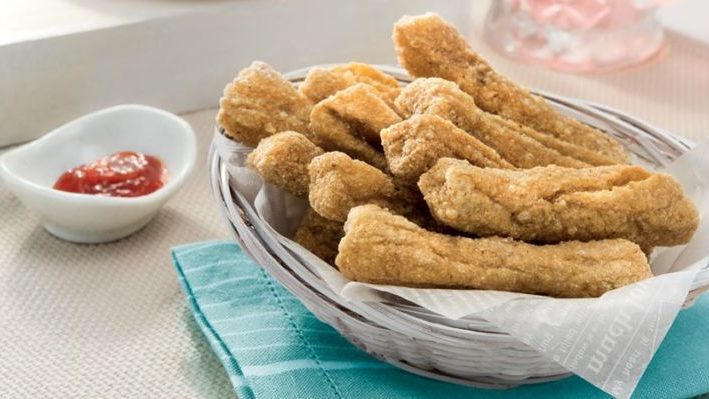Image Credit to: Anggie Warsito
Crunchy, savoury and popular among those with healthy teeth, keropok is a staple in the lives of Malaysians as a go-to snack when hungry or when watching movies at home. The popularity of keropok is not only known by Malaysians but also by those residing in other Southeast Asian countries. Freshly made or pre-packed are some options available.
What is Keropok?
A dried, crispy snack that comes in a variety of flavours, keropok are deep-fried crackers made from starch. Starch, water, salt, and flavourings of choice such as fish, prawn or chicken are then mixed and kneaded into the dough before being sliced thinly and fried. In Malaysia, keropok is produced locally and are even homemade.
History of Keropok
Different countries call it by a different name, ‘Keropok’ in Malaysia, ‘krupuk’ in Indonesia, ‘kaogrieb’ in Thailand, and ‘banh phong tom’ in Vietnam. In Malaysia, keropok is frequently associated with fish, hence, the existence of the famous ‘keropok lekor’ which originated from the state of Terengganu. It is believed that the conception of keropok was due to the abundant fish haul, which made fishermen create a new form of a snack. The name keropok was derived from the sound of kneading and beating the dough against the table. In a multiracial land such as Malaysia, keropok definitely is loved by all.
Two types of keropok can be found which have similar preparation methods, namely ‘keropok keping’ and ‘keropok lekor.’ To make the keropok keping, one has to make the keropok lekor first, whereby the keropok lekor will be then sliced thinly and be dried under the sun. Keropok keping can last for months and when it is ready for consumption, just deep-fried it in hot oil.
Due to popular demand, regardless of it being keropok lekor or keropok keping, these popular Terengganu snacks are also produced outside of Terengganu and exported across Malaysia. Heavy machinery such as industrial mixers is used to help keropok entrepreneurs meet the demand. The distribution of keropok lekor and keropok keping has become a source of income for the state of Terengganu.
Variety of Keropok
Puffed crackers or ‘keropok keping’ and fresh crackers or ‘keropok lekor’ are the two types that can be found. Keropok lekor is the wet, oily version among the other keropoks, a favourite grub for Malaysians to munch on during tea time. Keropok lekor is deep-fried and best enjoyed while hot with a side of chilli sauce. On the other hand, the puffed cracker is the pre-packed, pre-cooked version, but there are also one that you have to cook yourself (uncooked version).
The most popular flavour of keropok keping is the keropok ikan or fish-flavoured crackers. Different from the standard keropok lekor, this keropok keping is thinner and crispier. The uncooked version of this keropok takes less than a minute to cook when putting in hot oil. There are spicy and non-spicy versions of the pre-packed ones, where the spicy one is drenched in chilli sauce, hence stickier when munching.
Prawn-flavoured crackers are also a favourite among Malaysians. This type of keropok comes in a much lighter colour compared to the keropok ikan and usually decorated with different colours on the outer line of the cracker. While the chicken-flavoured crackers are delicious and fun to eat as it is made into a wheel-shaped.
Where to find Keropok in Malaysia
Keropok, as mentioned, is relatively easy to find in Malaysia. Try the spicy or cheesy version of Keropok Lekor from Keropok Lekor Ustaz (Taman Cahaya, Ampang) or just a simple Keropok Lekor from Keropok Lekor Sedap (Kulim).
Find more Malay cuisine on foodpanda!
